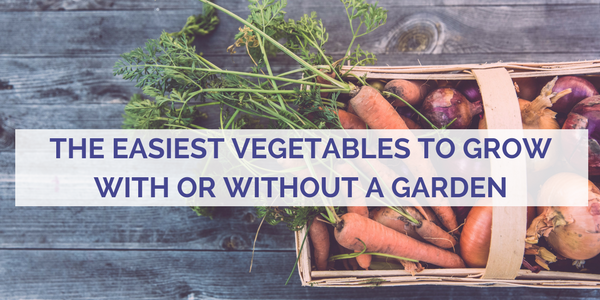
At last, early morning greets us with daylight; it’s spring! And with the new, hotter season comes an exciting opportunity. Have you ever fantasized about growing your own vegetables? Perhaps you always wanted to, but thanks to zero garden space, planting greens remains a pipe dream.
But what if I told you that growing certain vegetables is possible without a garden? Better yet, what if I told you it’s easy?
With the right tools, enough light, and a little spare time, you can enjoy the satisfaction of planting, nurturing and harvesting your own tasty vegetables without a garden.
Here are the easiest edible greens to grow that’ll add a punch of fresh flavours to your meals:
Lettuce
Growing lettuce comes with two perks: it can take just four weeks to grow, and it can be harvested repeatedly. You can choose from a range of seeds: Merlot, Red Oakleaf, Deer Tongue, Salad Bowl, and more. Pick a south-facing window for your prized growing spot. If the chances of sunlight are slim, it’s worth investing in a lamp to bring more heat on the scene (placing your lighting two inches above your shallow pots will work a treat). Lettuces are polite because they’ll tell you when they’re thirsty. Water them when they’re dry, watch them grow, and harvest your lettuce for the perfect salad.
Spring Onions
Spring onions are simple and fast to grow because they don’t need to be nurtured from seed. Technically, you’re regrowing them. Grab a bunch and cut them down. Tie them together with a rubber band or string, and add them to a spacious glass with water. The only rule of this gardening thumb is to change the water every day. You should notice some growth within a couple of sunrises. By week four, your flavourful spring onions will be ready to pick.
Cherry Tomatoes
A staple in many dishes; tomatoes are as valuable as they are rich and earthy. Certain types can also be grown without a garden, like cherry tomatoes. All you need is a large hanging basket (16 inches would be golden), some moss liner and standard potting soil. Plant your tomatoes around the edge and add some slow-release fertiliser. Water your hanging basket every day, and in a couple of weeks, you’ll be able to enjoy your prized, juicy red jewels.
Chillies
Looking to add a touch of homegrown fire to your cuisine? Chillies are super easy to grow. You just need seeds, a few small containers, fertilised soil (mixed with compost) and a green finger. Each seed needs to go half an inch below the surface of the soil in individual containers. Top tip: add a little sand into your soil for improved drainage. Make sure you plan your chilli planting session around the seasons; after six weeks of indoor growth, your chillies will need to be moved outside (a patio with sunlight will do!). Ensure it’s warm enough for them to begin the last leg of their growth.
Baby Carrots
Carrots are easy to grow but if you’re low on garden space (or have no space at all), baby carrots are a better option. Like chillies, all they need is heat and a pot with some loose, sandy soil. Plant your seeds about a quarter inch below the surface. When the leaves grow 2 inches tall, trim the seedlings (this gives the carrots enough room to grow underground). Your carrots will be ready add to your dishes within fifty-five days; a short time to wait for organic vegetables as delicious at these.
Microgreens
Perhaps the most difficult part of growing microgreens is choosing which microgreen to go. You can pick from an array of leafy greens, from kale to watercress. Help your seeds grow by planting them in a small container. Using disposable plates at the bottom of the containers will make it easier to lift them out when the plants are ready for harvesting. You don’t need to bury the seeds; scatter them on top of some moistened potting soil and add some more over the top. Avoid watering your microgreens; instead, use a mister to gently moisturise them. Your woody greens can be picked as early as twenty-five days after planting.
Becoming an expert grower of greens without a garden has never been simpler.
When I was small, I would feast on my Grandad’s home grown vegetables. There’s nothing better than picking food from a plant and letting your taste buds experience the true meaning of ‘fresh food’.
And now you can experience this too, without a garden.
To get you 100% prepared, I’ll leave you with a few of my favourite tips for growing these delicious vegetables:
● Watering with chamomile tea will help fight off fungus.
● Pick a breezy area for planting to keep mould at bay.
● Use a thermometer to monitor the temperature in the growing area
● Invest in a cool mist humidifier to can stop indoor heating drying the surrounding air